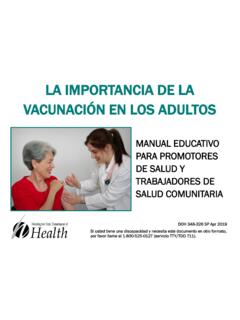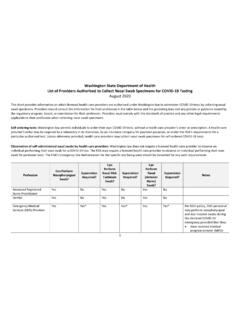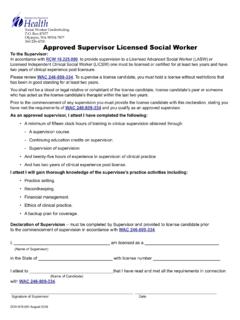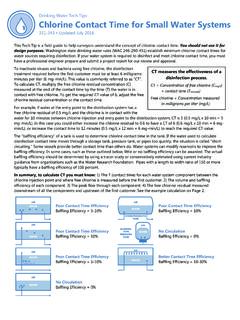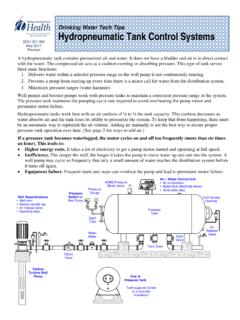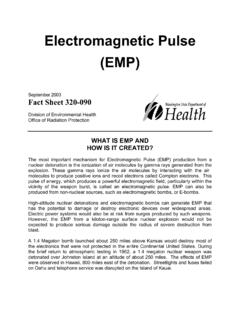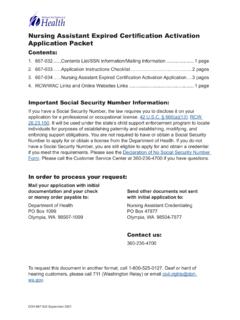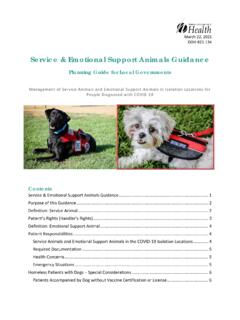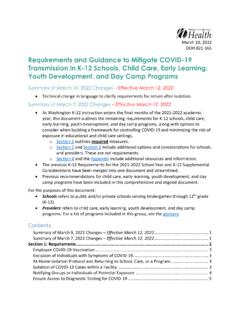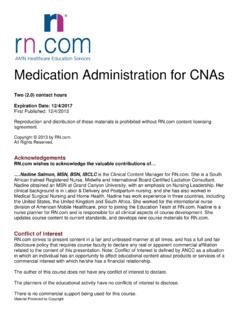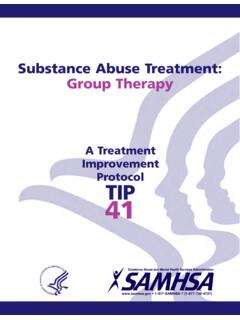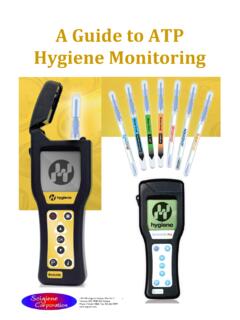Transcription of Hand Hygiene Policy and Procedure
1 Hand Hygiene Policy and Procedure Purpose Effective hand Hygiene reduces the incidence of healthcare -associated infections. Policy All members of the healthcare team will comply with current Centers for Disease Control and Prevention (CDC) hand Hygiene guidelines. Procedure Indications for Handwashing and Handrubbing A. Indications for Handwashing 1. When hands are visibly dirty or contaminated with proteinaceous material or are visibly soiled with blood or other body fluids, wash hands with either a non- antimicrobial soap and water or an antimicrobial soap and water. 2. Before eating and after using a restroom, wash hands with a non-antimicrobial soap and water or with an antimicrobial soap and water. 3. Handwashing may also be used for routinely decontaminating hands in the following clinical situations: Before having direct contact with patients Before inserting indwelling urinary catheters, peripheral vascular catheters, or other invasive devices that do not require a surgical Procedure After contact with a patient's intact skin ( , when taking a pulse or blood pressure, and lifting a patient).
2 After contact with body fluids or excretions, mucous membranes, non-intact skin, and wound dressings, even if hands are not visibly soiled When moving from a contaminated body site to a clean body site during patient care After contact with inanimate objects (including medical equipment) in the immediate vicinity of the patient After removing gloves B. Indications for Handrubbing If hands are not visibly soiled, an alcohol-based hand rub may be used for routinely decontaminating hands in the following clinical situations: Before having direct contact with patients DOH 505-144 May 2018. Before inserting indwelling urinary catheters, peripheral vascular catheters, or other invasive devices that do not require a surgical Procedure After contact with a patient's intact skin ( , when taking a pulse or blood pressure, and lifting a patient). After contact with body fluids or excretions, mucous membranes, non-intact skin, and wound dressings, only if hands are not visibly soiled When moving from a contaminated body site to a clean body site during patient care After contact with inanimate objects (including medical equipment) in the immediate vicinity of the patient After removing gloves Non-Surgical Hand Hygiene Technique A.
3 Handwashing with soap and water (either non-antimicrobial or antimicrobial). 1. Wet hands with running water 2. Apply hand washing agent to hand 3. Vigorously rub hands together for at least 15 seconds, covering all surfaces of hands and fingers 4. Rinse hands thoroughly with water and with hands angled down in the sink 5. Dry hands thoroughly with a disposable towel(s). 6. Use disposable towel to turn off the water B. Alcohol-based hand rub 1. Apply product to palm of one hand 2. Rub hands together, covering all surfaces of hands and fingers 3. Continue to rub until hands are dry Nails 1. Artificial fingernails or extenders may not be worn if duties include direct contact with patients 2. Natural nail tips shall be less than inch long Gloves and Hand Hygiene Gloves reduce hand contamination by 70 80 percent, prevent cross-contamination and protect patients and health care personnel from infection. However, the use of gloves does not eliminate the need for hand Hygiene .
4 1. Wear gloves when contact with blood or other potentially infectious materials (other body fluids, secretions and excretions), mucous membranes, non-intact skin and contaminated items will or could occur. 2. Change gloves during patient care if moving from a contaminated body site to a clean body site. DOH 505-144 May 2018. 3. Remove gloves promptly after use, before touching non-contaminated items and environmental surfaces, and before caring for another patient. 4. Decontaminate hands after removing gloves. glossary of commonly used Hand Hygiene Terms Alcohol-based hand rub. An alcohol-containing preparation designed for application to the hands for reducing the number of viable microorganisms on the hands. In the United States, such preparations usually contain 60% 95% ethanol or isopropanol. Antimicrobial soap. Soap ( , detergent) containing an antiseptic agent. Antiseptic agent. Antimicrobial substances that are applied to the skin to reduce the number of microbial flora.
5 Examples include alcohols, chlorhexidine, chlorine, hexachlorophene, iodine, chloroxylenol (PCMX), quaternary ammonium compounds, and triclosan. Antiseptic handwash. Washing hands with water and soap or other detergents containing an antiseptic agent. Antiseptic hand rub. Applying an antiseptic hand rub product to all surfaces of the hands to reduce the number of microorganisms present. Cumulative effect. A progressive decrease in the numbers of microorganisms recovered after repeated applications of a test material. Decontaminate hands. To reduce bacterial counts on hands by performing antiseptic hand rub or antiseptic handwash. Detergent. Detergents ( , surfactants) are compounds that possess a cleaning action. They are composed of both hydrophilic and lipophilic parts and can be divided into four groups: anionic, cationic, amphoteric, and nonionic detergents. Although products used for handwashing or antiseptic handwash in health-care settings represent various types of detergents, the term soap is used to refer to such detergents in this guideline.
6 Hand antisepsis. Refers to either antiseptic handwash or antiseptic hand rub. Hand Hygiene . A general term that applies to either handwashing, antiseptic handwash, antiseptic hand rub, or surgical hand antisepsis. Handwashing. Washing hands with plain ( , non-antimicrobial) soap and water. Persistent activity. Persistent activity is defined as the prolonged or extended antimicrobial activity that prevents or inhibits the proliferation or survival of microorganisms after application of the product. This activity may be demonstrated by sampling a site several minutes or hours after application and demonstrating bacterial antimicrobial effectiveness when compared with a baseline level. This property also has been referred to as residual activity. Both substantive and nonsubstantive active DOH 505-144 May 2018. ingredients can show a persistent effect if they substantially lower the number of bacteria during the wash period. Plain soap. Plain soap refers to detergents that do not contain antimicrobial agents or contain low concentrations of antimicrobial agents that are effective solely as preservatives.
7 Substantivity. Substantivity is an attribute of certain active ingredients that adhere to the stratum corneum ( , remain on the skin after rinsing or drying) to provide an inhibitory effect on the growth of bacteria remaining on the skin. Surgical hand antisepsis. Antiseptic handwash or antiseptic hand rub performed preoperatively by surgical personnel to eliminate transient and reduce resident hand flora. Antiseptic detergent preparations often have persistent antimicrobial activity. Visibly soiled hands. Hands showing visible dirt or visibly contaminated with proteinaceous material, blood, or other body fluids ( , fecal material or urine). Waterless antiseptic agent. An antiseptic agent that does not require use of exogenous water. After applying such an agent, the hands are rubbed together until the agent has dried. References To access the CDC's hand Hygiene guidelines in their entirety, see the CDC website at: ;. DOH 505-144 May 2018.
